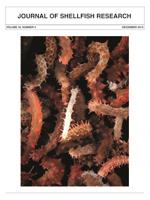This study represents the first evaluation of “naturally mated” triploid oysters in South Carolina (SC) waters in an attempt to create new business opportunities for the SC shellfish industry. Triploid eastern oysters, Crassostrea virginica, were grown alongside both a locally derived SC diploid line and an SC-Virginia (VA) diploid line at 6 commercial grow-out sites along the coast of South Carolina from August 2011 through March 2012. The triploid oyster line was created by fertilizing SC eggs with tetraploid VA sperm. The 2n SC-VA line was created by fertilizing SC eggs with VA diploid oyster sperm, and the 2n SC-SC line was created using both eggs and sperm from SC broodstock. The growth performance (shell height, biomass, and percent market size) of oysters was evaluated on commercial culture grounds, working in close cooperation with commercial fishermen. Oysters were deployed in various gear types, but conditions for growth among lines were standardized within sites. All grow-out sites had similar high salinity (>23 psu) and were established in shallow water (range, 0–6 ft, depending on tidal stage). Oysters were sampled frequently throughout the nursery period, 1mo after field deployment, and quarterly thereafter (data not presented) until an individual grower determined that at least 1 of the 3 oyster lines was ready to be harvested, at which time all 3 lines were sampled for the last time. At the final sampling, the mean shell height of the triploid oysters was significantly greater (P < 0.001) than at least 1 of the 2 diploid lines at all sites. Triploid ash-free dry tissue weights were found to be significantly greater (P < 0.001) than at least 1 of the diploid lines at all sites. The percent of market size oysters (shell height, >76 mm) was greater for the triploid oyster line than for either of the diploid lines at all sites except the Romain River site, where the use of a shellfish tumbler was applied during husbandry to address “overset.” One of the primary impediments to producing high-quality single oysters destined for the half-shell market is the unwanted fouling of the grow-out product, often by wild oyster spat resulting from naturally high levels of oyster recruitment, a phenomenon referred to as overset. The results of this study are important for the commercial shellfish industry in South Carolina through its demonstration that current triploid technology has the ability to create a quality oyster product, within a timeframe that avoids the intense period of oyster recruitment in the spring, following that of seed production, in the form of locally produced oysters for the lucrative, single, half-shell oyster market.
How to translate text using browser tools
1 December 2013
Evaluating the Potential Growth Advantage of Triploid Eastern Oysters (Crassostrea virginica) in South Carolina Relative to Commercially Cultured Diploid Native Stocks
Benjamin W. Stone,
Nancy H. Hadley,
Peter R. Kingsley-Smith
ACCESS THE FULL ARTICLE

Journal of Shellfish Research
Vol. 32 • No. 3
December 2013
Vol. 32 • No. 3
December 2013
aquaculture
Crassostrea virginica
eastern oyster
shellfish industry
triploid




